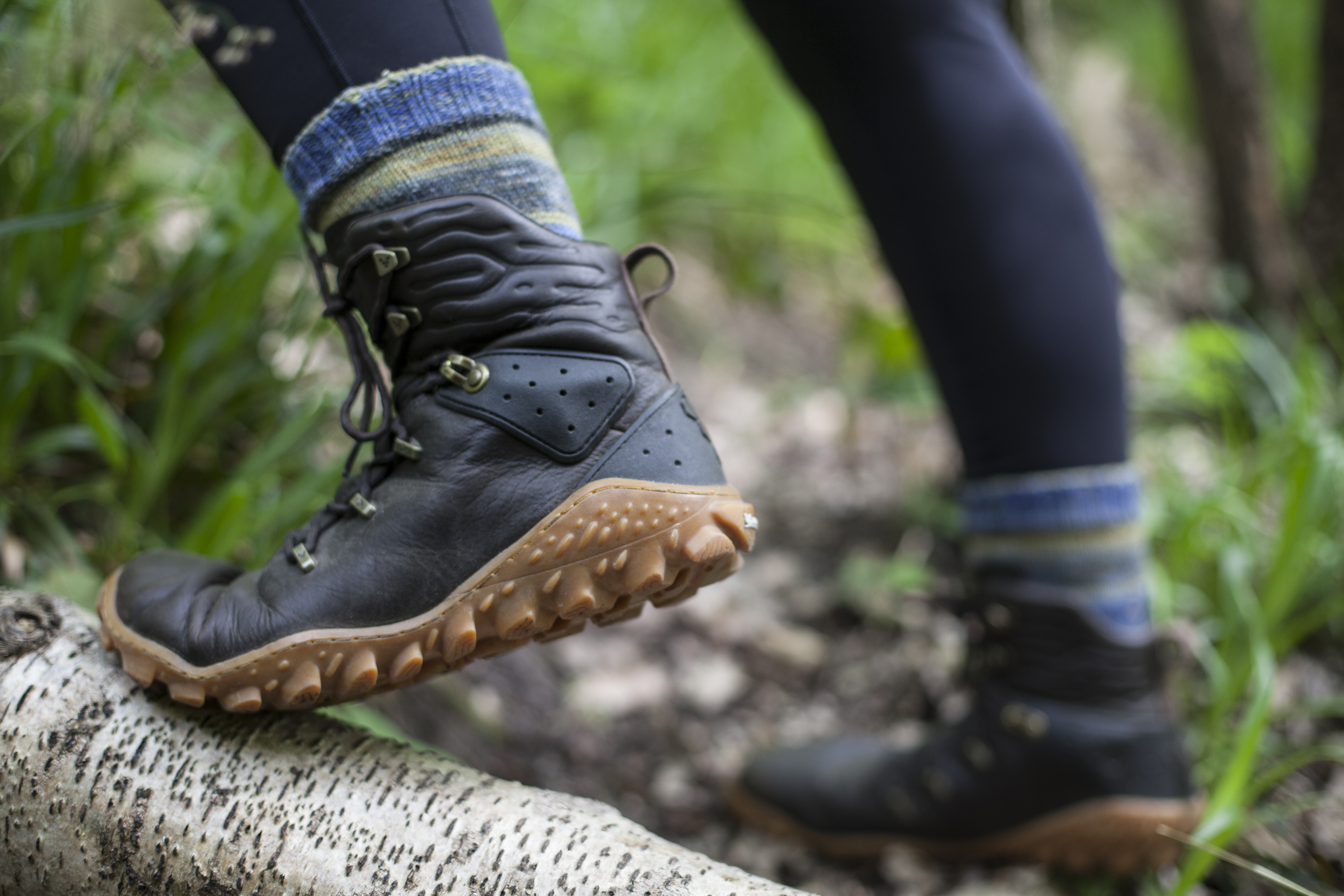
First impressions
It’s time for a confession - I’ve been a barefoot cynic for many years. Any trend that has people waxing evangelical tends to make me think “too good to be true”.
Having two friends who refused to wear anything other than barefoot shoes and boots left me feeling just that, especially when they complained about how much they cost and yet couldn’t seem to stop buying them. Were barefoot shoes and boots like a drug that once you’d taken you couldn’t go back? There was only one way to find out, so when Vivobarefoot offered to send me a pair of their leather hiking boots to test, I decided to take the plunge.
For the uninitiated, barefoot shoes and boots have zero drop - that is, there is no height difference between the heel and the ball of the foot and toe. They also typically have much less cushioning compared to standard shoes, lots of flexibility and a very generous toe box, to allow your pinkies to spread out and grip. The idea is that when wearing them, your feet can perform as they would if you were wearing no shoes, and you can feel the ground properly. Over time the company claims they will actually make your feet stronger.
So how did they compare to the best hiking boots? Read on to find out:
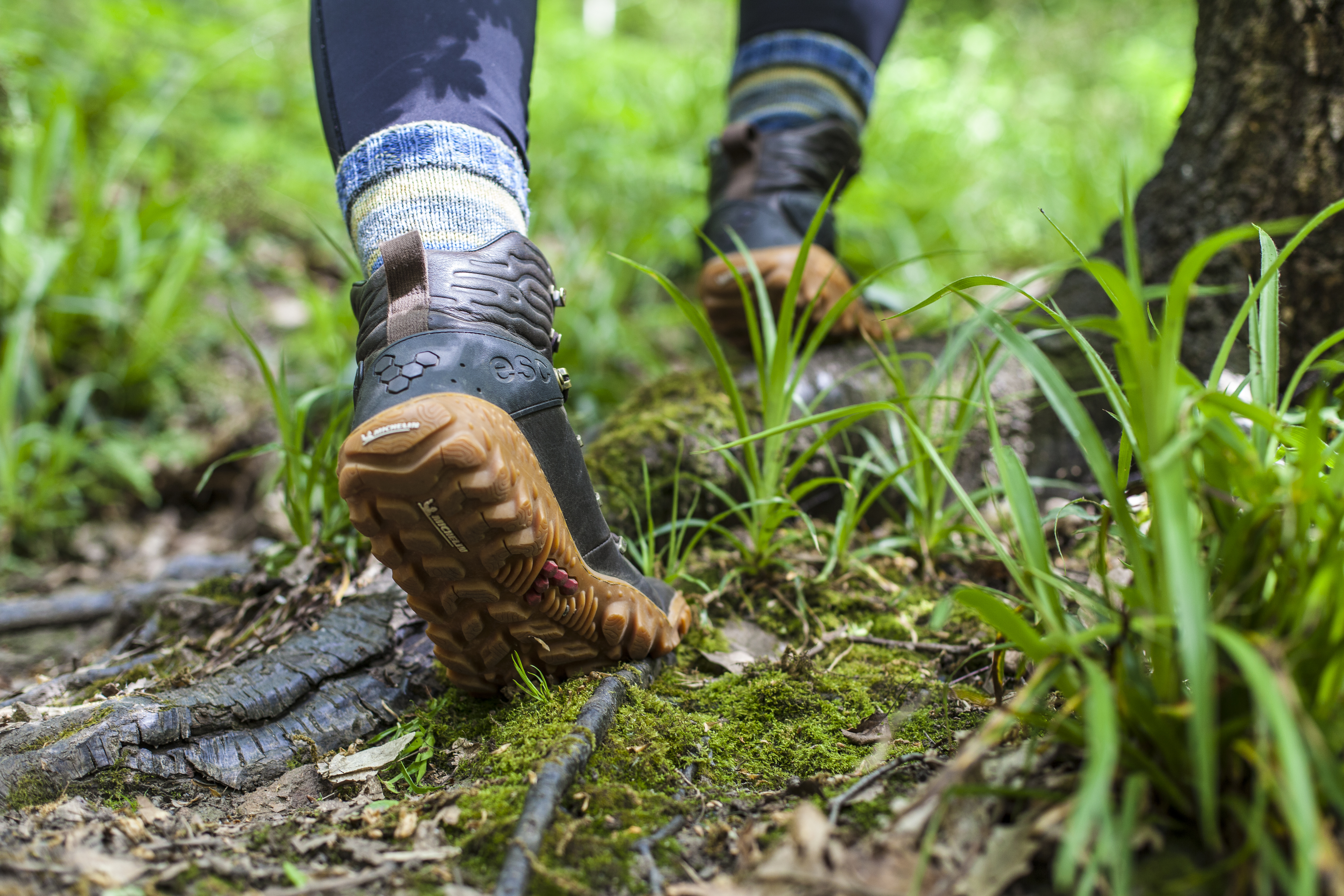
Fit
• List price: $270 / £210
• Models available: Men’s & women’s versions
• Sizes: Men’s US 7 to 15, UK 6 to 14; Women’s US 4.5 to 11, UK 2.5 to 9
• Materials: Wild hide leather upper, RPET lining, Active Ortholite Performance Insole (98% recycled PU foam), Outdoor ESC Michelin Outsole (52% synthetic rubber, 48% additives)
• Lugs: 7mm
• Sizes: Men’s US 7 to 15, UK 6 to 14; Women’s US 4.5 to 11, UK 2.5 to 9
• Weight (per boot): 1lb 3oz / 538g (Women’s US size 10, UK size 8.5, EU size 42)
• Color: Bracken
• Best use: Day hikes
Having never worn barefoot anything before (unless you count my 12-year-old Haviana flip flops that really need to be retired), trying on a pair of barefoot boots for the first time was a pleasant surprise. I have pretty wide feet, which had previously led me to gravitate to the Keen Targhee IV hiking boots, but these felt even more spacious, with plenty of room for my toes to spread out.
Barefoot aficionados advise that there should be a thumb’s width of space at the end of the toes to allow room for movement, and for your toes to flex - you don’t want them to be snug at all. But despite having a generous amount of room in the toe box, my heels felt well contained, and the wide placement of the eyelets allowed me to adjust the fit precisely. I didn’t initially like the crinkle style laces, as it seemed to prevent me from knotting them tightly, but what I’ve found, after six months of wearing them, is that you don’t need to double knot or lace these boots in an unusual way - the crinkle laces do the gripping for you, and I think mine have come undone once, or possibly twice, in the whole time I’ve worn them.
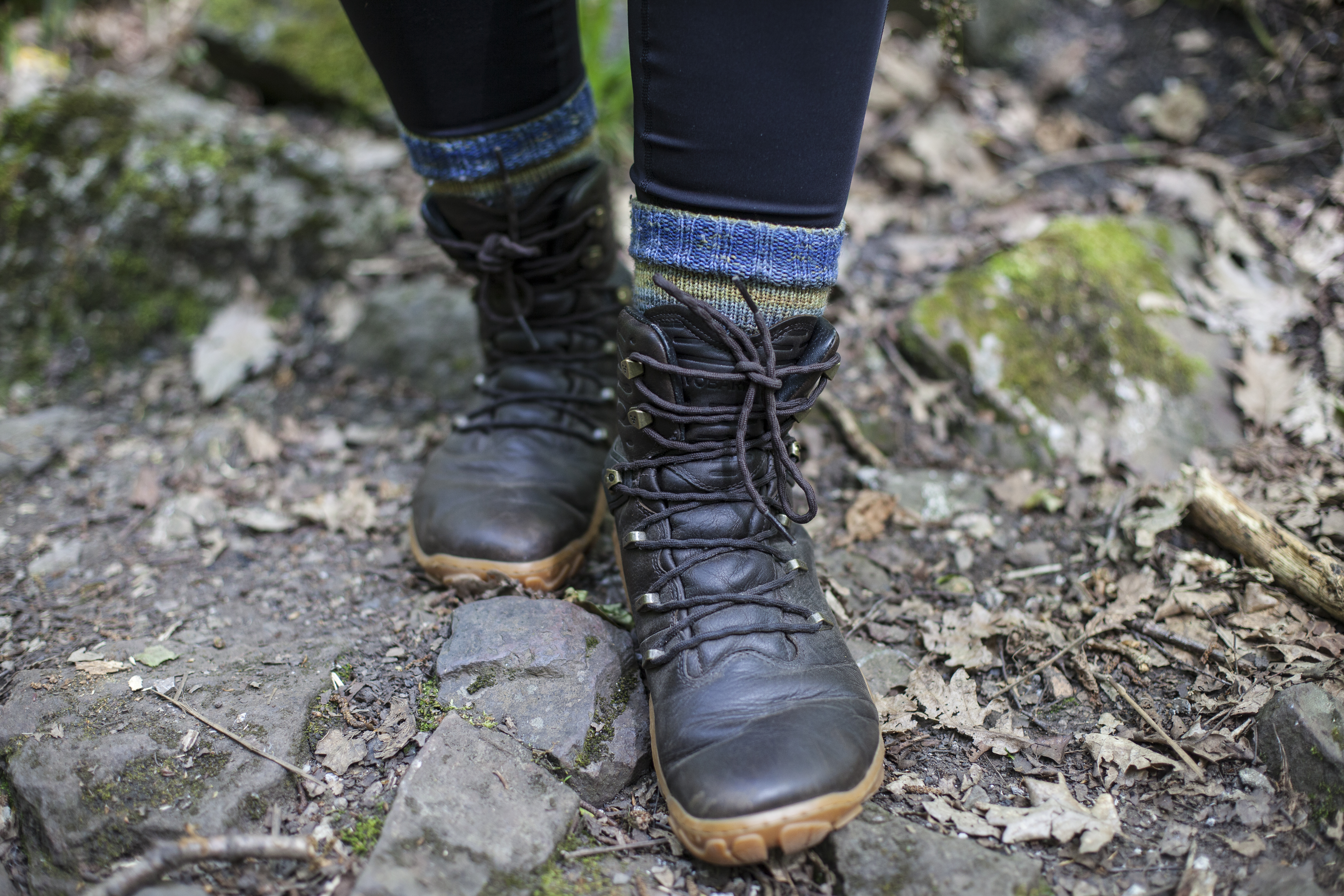
On the trails
So far, so good. But the big question was, how would my feet fare on the trails without the usual support and cushioning I was used to?
Vivobarefoot advises that it takes about six weeks of daily wear to adjust to barefoot shoes, and I found this to be somewhat true. As I received the boots in at the onset of winter, I decided to wear them as much as possible - not just for hiking, but in urban environments too.
At first my feet and legs felt tired and a bit achy after eight hours of having them laced up. It was also strange to be able to feel the ground, despite the 7mm lugs on the ESC Michelin outsole, and at first I didn’t like the sensation.
But they were also incredibly comfortable to wear, and they quickly became my footwear of choice for just about any occasion. After a couple of weeks, the tiredness I experienced at the end of a day disappeared, and ‘normal’ hiking boots started to feel odd, because while wearing them I couldn’t sense the terrain beneath me to anything like the same extent.
On the trails, the amount of feedback from the 2.5mm base sole did take getting used to, and I wouldn’t advise them for people with very sensitive feet.
- Hiking on a budget? These are the best cheap walking boots for men and women
- Prefer to walk in lightweight low-cut footwear over summer? Check out the best hiking shoes on the market
Trail feel is a tricky one for me. As someone with a history of knee problems and multiple surgeries under my belt, I have a perpetual fear of falling over and ending up in hospital. Because of this, I’ve appreciated the amount of cushioning and protection provided by more traditional boots, which has meant that my usual boots don’t have a lot of trail feel. But I’ve also had a tendency to stumble on the trail, as I literally can’t feel where my feet are in relation to the ground and the lack of mobility in my left knee makes me a little clumsy.
This was completely reversed with the Trackers. Yes, I could feel every stone underfoot - not in a painful way, but with far more sensation that I was used to. But I also never fell and felt far more stable on my slightly wobbly knees than I normally do, which is probably down to the flexibility of the sole and the increased ability to actually grip.
The deep multidirectional 7mm lugs made easy work of slippery conditions and over time these boots have made me far more confident when traversing rough terrain. Their flexibility has also made descents much easier on my fragile knee, as I’m no longer fighting against the urge to tip forward that comes when I’m wearing stiffer traditional boots - which is usually painful for me, and the large heel lug acts like a brake to prevent me slipping when going down steep declines. Over time, I truly believe that they have made my feet stronger.
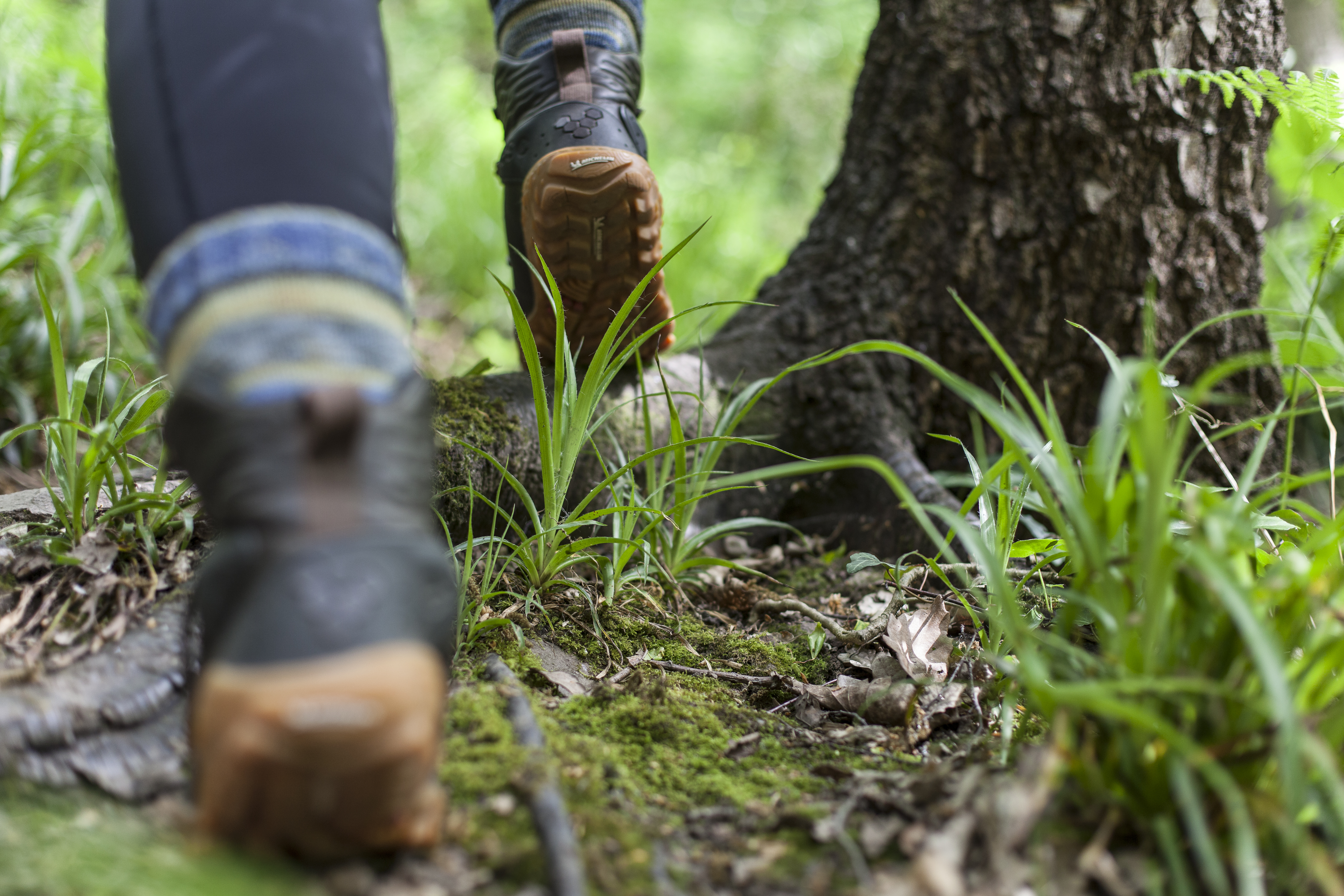
Waterproofing and protection
Waterproofing is where one of my barefoot-addicted friends had a real gripe about early models, although the latest Tracker Textile AT boots are fully waterproof.
Vivobarefoot don’t promise that the Tracker Forest ESCs are waterproof, instead describing them as water resistant, but they do come with a box of Renpur - a thin wax you use to coat the leather outer and keep moisture out. And this, combined with the RPET insole, has meant that I’ve never had a problem with wet feet in these boots. They also have a bellows tongue to stop water ingress, although, as is the case with many hiking boots, the bellows don’t extend all the way to the ankle. For that reason alone, I wouldn’t choose them for wading through bogs if I can avoid it, but I haven’t experienced wet feet once while wearing them.
When people hear the words ‘barefoot hiking boots’ they may be concerned that their feet won’t be properly protected from stones and sticks on the trails, but I didn’t find that to be the case at all. The back of the ESC Michelin outsole comes up relatively high, and the boots also have a stiff layer of extra protection at the ankle. While there isn’t a toe bumper, I actually found I was less likely to stub my toes in the first place in these boots once I got used to wearing them, because, unlike with traditional styles, I could actually feel where I was going. I’ve lost count of the number of times I’ve tripped on a rock in more conventional hooves.

Environmental impact
Like many of the best outdoor gear companies, Vivobarefoot has made moves to reduce its environmental footprint. The outers are made from wild hide - leather sourced from smallholders who allow their cattle to roam freely, rather than on large industrial farms. I found this leather to be exceptionally durable - the boots have hardly shown any signs of wear, despite being worn at least four days a week for six months, and if anything look better with time than they did when I got them out of the box.
The ESC Michelin rubber outsoles are not made of recycled materials as far as I’ve been able to establish, but the lining, laces and other hardware are. The company also offers a recycling service and the opportunity to buy refurbished pairs through its Revivo site.
If I had to give one downside to these boots, it would simply be that, you will probably end up converting to the barefoot way. I didn’t think that would be the case would me, but it turns out I was completely wrong…
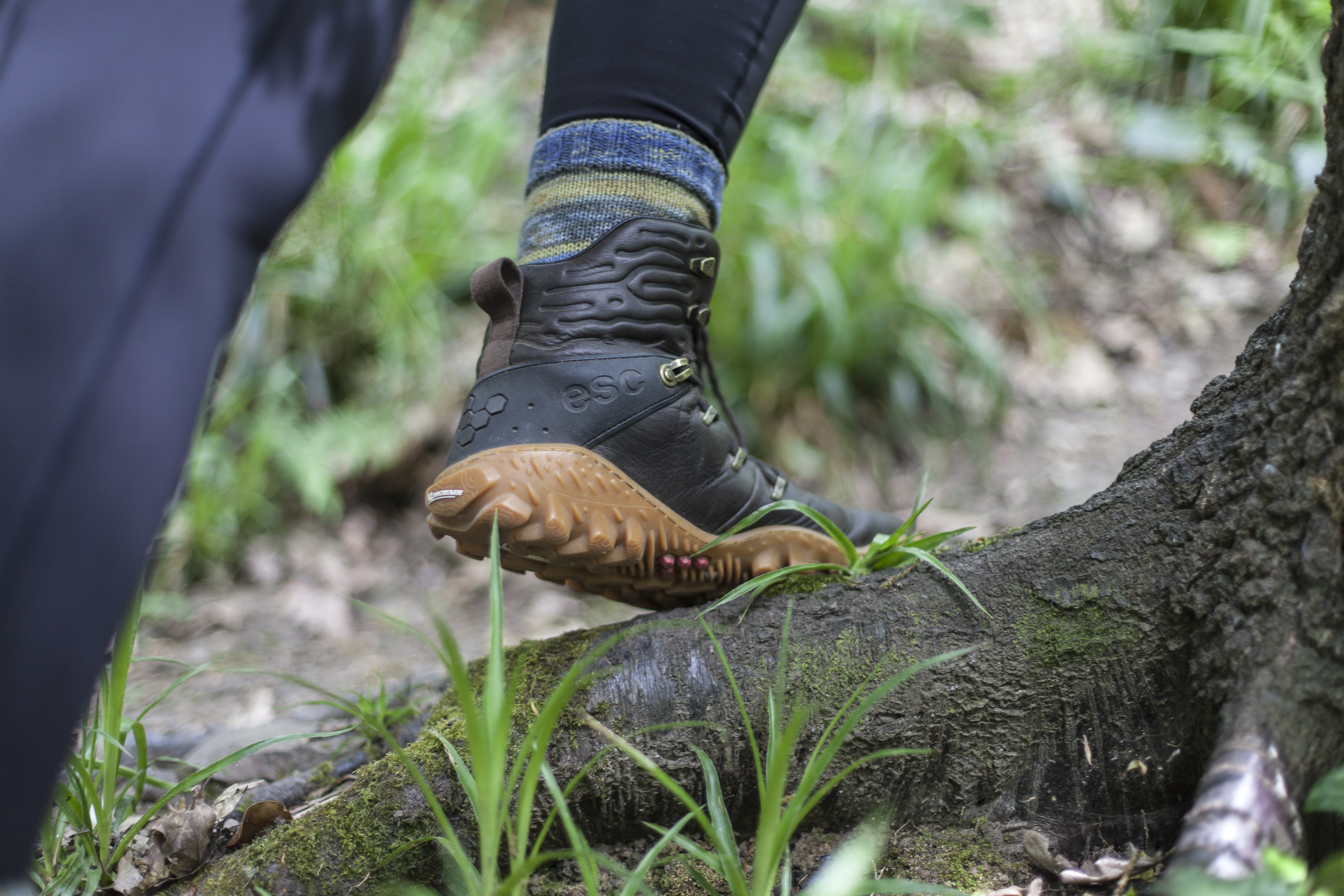
Also consider
If you're after a slightly lighter barefoot boot, the Vivobarefoot Tracker Textile AT is well worth a look. It's slightly cheaper than the Tracker Forest ESC and is fully waterproof, while remaining nicely breathable. However, it's not suitable for slick conditions as the soles just aren't grippy enough.
For
- Extremely lightweight
- Excellent trail feel
- Comfortable and roomy
- Fully waterproof and breathable
- Removable thermal insole adds some insulating properties
- Excellent eco credentials and fully vegan
- Easy to pack when traveling
Against
- Eye-wateringly expensive
- Grip fails on wet stone and steep, muddy slopes
For a summer barefoot hiking shoe that's suitable for trail running too, the exceptionally light Primus Trail Knit FG is a great option, and highly packable too. Our tester found the sole to be impressively grippy, and had no issues with excessive trail feel leading to discomfort. We think they're a great first barefoot shoe, as they look right at home in urban spaces too, while still providing incredible comfort, so you'll get plenty of wear out of them.
For
- Comfortable
- Durable
- Good grip
- Easy to wear
- Pack down to almost nothing
Against
- Be very careful to get the right size
- May not be able to wear them without socks
Model |
Vivobarefoot Tracker Forest ESC boots |
Vivobarefoot Tracker Textile AT boots |
Vivobarefoot Primus Trail Knit FG shoes |
List price |
$270 / £210 |
$220 / £180 |
$180 / £140 |
Materials |
Wild hide leather upper, RPET lining, Active Ortholite Performance Insole (98% recycled PU foam), Outdoor ESC Michelin Outsole (52% synthetic rubber, 48% additives) |
Upper: 95% recycled Pplyester, 5% Spandex; Insole: 40% polyester, 40% PU foam, 20% aluminum; Outsole: 20% natural rubber, 55% synthetic rubber, 25% additives |
Recycled PET and rubber compounds |
Best for |
4-season hiking |
3-season hiking, although avoid slippery conditions |
3-season hiking and trail running |
- The best hiking boots: capable summit-baggers and fast-paced walkers
- The best hiking shoes: protect your feet on any trail with our top choices
- How Advnture tests products







